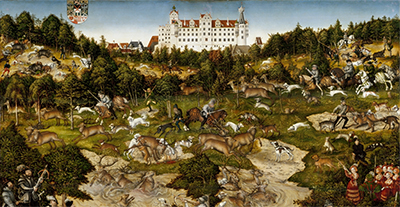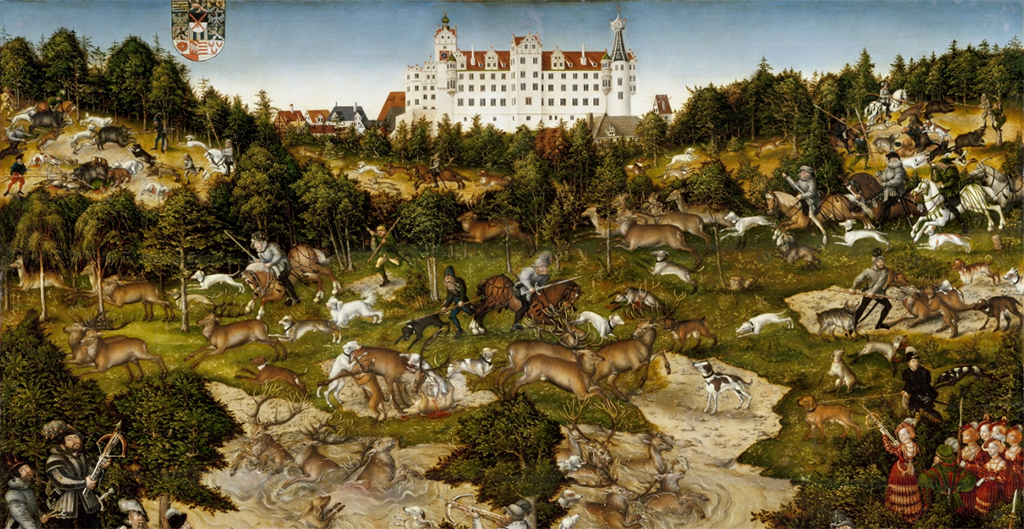The Museo del Prado is the proud owner of this elaborate composition from Lucas Cranach the Elder, dated at 1544. This huge piece is almost two metres wide.
Hunting was a significant part of society across Northern Europe during this period and the depiction of animals can also be found frequently throughout the artist's career. He would often use stags and similar as supporting elements to his portraits, normally when they were positioned close to a forest. In this case the animals take centre-stage, running across the scene from right to left in a chaotic atmosphere which immediately holds your attention. The hunters themselves right on horseback, whilst other assistants join in on foot. Cranach also places this activity over a sprawling landscape scene, using similar tones of green that are used elsewhere in his career. He had a particular style in depicting trees and shrubbery which is instantly recognisable to those familiar with his career. There is also a coat of arms in the top left, with Cranach known to have designed several elements of heraldry during his wide ranging career.
The building at the back has been identified as the castle of Hartenfels in Torgau (Saxony). Emperor Charles V and John Frederick the Magnanimous, Elector of Saxony are both in attendance during this exciting event. You will also find Sibylla of Cleves featured here too, she is placed in the bottom right of the canvas, dressed in red and stood alongside some of her servents. Interestingly, the hunt is never believed to have actually ever taken place and the scene that we find in front of us here was intended as a means to illustrating good governance. Cranach did produce symbolism in much of his oeuvre, so this explanation seems entirely reasonable. The piece was gifted to the Emperor upon completion.
This stunning scene will remind many of the battle paintings of Italian artist, Paolo Uccello. The relatively flat perspective and incredible detail certainly draws these two artist's careers together in this example, but there work certainly diverges when you compare other examples of their work. It is specifically the likes of Uccello's The Hunt in the Forest and Niccolò Mauruzi da Tolentino at the Battle of San Romano which offer the greatest resemblance. Both the Italian and Northern Renaissance artists would be aware of each other during their periods of success, and certainly also were open to learning from each other. It is believed that Titian visited Cranach in Germany at one point, which also underlines the high regard with which this artist's reputation was held at that time. He also ran an extensive workshop which helped to promote his work outside of his national boundaries, with woodcuts being reproduced and dispersed further afield.





